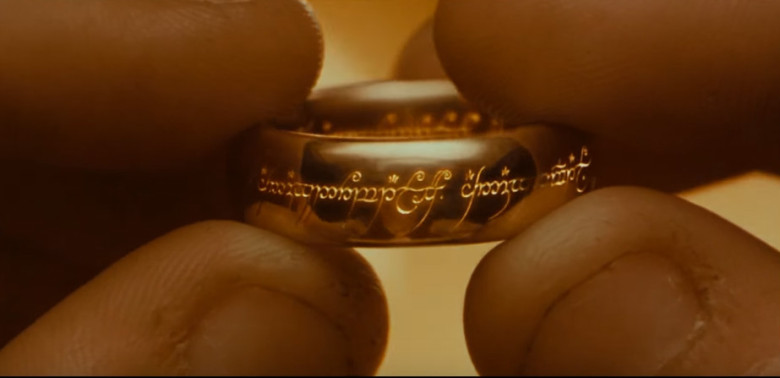Word Count Signifies Importance
SJ Shoemaker
10/18/2021

Forward:
When I first began my blog as a Facebook page some years back I laid out an authorial statement of conduct. Effectively, I wanted to outline what I would and wouldn’t be posting. This is something that I should and likely will be updating and posting here, on my website (by the end 2021, most likely).
At the time, my biggest concern and number one point regarded writing advice. As a writer and freelance editor, I have my fair share of advice and bulleted lists of dos and don’ts. However, I didn’t want my blog to turn into a laundry list of personal likes and dislikes that I disguised as “Rules of Writing” that can be wielded as a bludgeon against fellow authors who don’t follow the “rules” and therefore are bad writers.
What I want most of all is to share my passion for writing. I want a network of friends who are as passionate about writing as I am. I want a constant conversation full of critiques and compliments and advice and building each other up. Prompting and challenging one another to become the best possible writers we can be. And beginning my blog with regurgitated rules that could act as gatekeeping would have prevented my goals from becoming a reality. So, I made a blanket declaration that I would not attempt to teach my readers a lesson. I would, from time to time, discuss what I’ve learned recently because I have a passion for writing. But I would not present it as a hard-and-fast rule. More “Isn’t that interesting” and less “You ought to”.
With this post, I am skirting my own rule more than I’d like. But it has been on my mind ceaselessly, and I needed to get it out of my head and onto paper. I will present my opinion on writing focus. These are not meant to be taken as rules. You can disagree with them and tell me I’m wrong, even. I allow comments on the posts for that exact reason. These are my opinions, let’s discuss.
Post:
Imagine your favorite scene from the best book you’ve ever read. Think about how it would look in a film. Focus on the mental camera in your head. How your imaginary lens sweeps across your thought-made landscape or zooms into your protagonist’s face as they discover the truth long-since hidden from them.
I know there are plenty of writers who will disagree with my comparison of written text to a visual medium. They are unique arts with different benefits and drawbacks. Thinking of one as if it were the other will most often result in a product inferior to one that embraces its medium. I agree, in general. But in considering transposing from one to the other we can evaluate more impartially what is missing. Just bear with me.
Back to your mental palace. You’re still imaging the scene, right? Now take a moment to consider what and how you translated those words on a page into a mental shot. The aging and distraught man in the hospital chair. The monitor beeping not quite rhythmically, just off enough to prevent comfort. The things the author chooses to describe make up the composition of the shot. If they mention a red Lamborghini, there’s one in your shot. The degree of detail the author goes into corresponds with your mental zoom level. If they mention a nine-year-old girl holding a yellow balloon, you probably picture a wide shot from a low angle. One that shows the girl from head to toe with enough headroom to also contain the balloon, but not enough to see any adult above the shoulders. If instead, they mention this little girl has two dark braids, one on either side of her head with her front two teeth missing. Now, instead of a wide shot, it’s a headshot.
But now consider, how long did the shot last in your head? How long did you allow your mental camera to linger on the image? And what in the text led you to make that decision?
In case anyone has forgotten the title of this post: Word Count. The answer is word count. The more words and page space devoted to an item or scene or character’s emotional state, the longer the reader is going to spend imagining it.
Any studied film analyst or critic is familiar with the idea that a lingering camera denotes relevance. Early in a film, if a camera lingers for a second on a pen after the characters exit the shot, that pen is going to play a pivotal role in the third act. If the film devotes a large portion of its runtime focused on these two boys hanging out and spending time together, even when the conversations don’t seem to carry any significance outside of themselves, the viewer understands that their growing friendship is of utmost importance. Perhaps one of them will die by the end or a growing enmity will separate them forever, and the time we spent with them growing together makes it all the more tragic. Or maybe their friendship will grow into a romance, and their shared screentime will add to the viewer’s satisfaction when they finally admit their feelings for one another.
So far, I have said absolutely nothing of note. You would be hard-pressed to find anyone who disagrees with these basic understandings of writing and film.
But if I now put these two halves of a thought together…
The longer a shot in a film lingers, the more importance the pictured scene/character/object carries.
+
The larger word count an author devotes to a scene/character/object, the longer the reader will point their mental camera at said scene/character/object.
=
Word count signifies importance.
When I saw this idea first on paper, I found it laughably trivial. Yeah, makes perfect sense. I already knew that. But I was surprised by just how often I fail to use this concert in my own writing. If something is important to my story, I should be expending more words and page space to drive home the importance.

For an example of this done well, look no further than J. R. R. Tolkien’s description of the One Ring in The Fellowship of the Rings. It’s a plain gold band with words that appear on it when heated by fire. But Tolkien doesn’t settle for my bland description. Instead, he first describes the struggle Biblo has parting with it. Then he has Gandalf leave for years to investigate the ring’s significance. Then he has Gandalf return, where Frodo describes its abilities, causing Gandalf to warn against its use and ask to discuss it no longer until the sun rises. Then Gandalf explains how the rings of power were forged, which one he fears this one is, and a way to determine if his fears are correct. Then they cast it in the fire, see the writing on the band, and confirm it is the One Ring. And then they discuss the importance it holds to others and the length to which these others will go to get it back.
Pages upon pages. Descriptions and histories and character motivations all devoted to introducing a plain-looking ring. All these words spent building up its significance and lengthening the reader’s mental shot of this ring, justifying its thought-made screentime.
Word count signifies importance.

Allow me to now describe a bad example of utilizing this practice. The reason why this has been on my mind non-stop for weeks. I watched 2021 film, The Green Knight recently. A full analysis of it and its corresponding text is in the works for you to all see next month. So I won’t go into great detail here. What you need to know, if you haven’t yet watched it is this: The main character is a knight, Gawain, who goes on a journey in which he is tested on the 5 knightly virtues of Fellowship (friendship), Pity (generosity), Cleanness (chastity), Courtesy, and Chivalry (piety/frankness/honesty). One by one he is tested, and one by one he fails. His character is marked by these failures, first by guilt and then physically. And in struggling, he learns to become a more virtuous person and chivalric knight. This is THE MAIN POINT of the film. I know this because I’ve read the text. There, they describe the symbol of knighthood, a five-pointed star of overlapping lines, forming a neverending cycle, an unbreaking knot where each point reinforced the others. This symbol is described in detail and drawn out on Gawain’s shield which he carries with him on his journey. It represents the 5 virtues, this is all laid out in plain text over multiple pages. Given more attention and word count than almost anything else because it is important. In the film, however, the symbol is shown for a split second on the shirt of another knight. The symbol is never shown to be important. The 5 virtues of a knight are never mentioned, much less explained.
Word count signifies importance.
In translating the story from text to film, they forgot this concept. And it resulted, in my opinion, in a film whose MAIN POINT (all caps for emphasis) was shown to be unimportant because they didn’t spare the screentime to build it up as such. The plot as presented feels meandering and incomplete without the supplemental text to explain what should be granted importance and why.
Word count signifies importance.
But that’s all I’m going to say about the Green Knight until my full analysis next month. I’m personally still coming to grips with this idea. More specifically, I’m still trying to find the best way to ensure I’m adhering to the concept as often as I can. For quite a few of my older works, I wish I had used the idea to strengthen their stories by giving relative weights to individual moments. And I hope I can use it as a tool in my writing repertoire to improve future works yet to be posted.
Word count signifies importance.
It’s not a very profound idea. But if it helps me improve my writing, I’m glad to have learned it.
Would you like to share your thoughts?
Your email address will not be published. Required fields are marked *
0 Comments